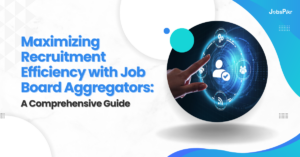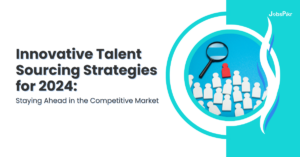The job market is a dynamic and ever-evolving landscape, where the challenge of matching the right candidates with the right job opportunities can be complex and time-consuming. In recent years, artificial intelligence (AI) and machine learning (ML) have emerged as powerful tools in revolutionizing the way job opportunities are curated and improving the accuracy of candidate-job matching. This article delves into how AI and machine learning are transforming job data processing, enhancing the recruitment process, and ultimately creating better outcomes for both job seekers and employers.
The Evolution of Job Data Processing Methods
This process involves collecting, analyzing, and interpreting vast amounts of information related to job postings, candidate resumes, and labor market trends. Traditionally, this process relied heavily on manual efforts, with recruiters sifting through countless resumes and job applications to find suitable matches. However, the advent of AI and machine learning has significantly streamlined this process, enabling more efficient and accurate job data information.

Source: GPTech Blog
Understanding AI and Machine Learning process
AI refers to the simulation of human intelligence in machines that are programmed to think and learn like humans. Machine learning, a subset of AI, involves the use of algorithms and statistical models to enable machines to improve their performance on a specific task through experience. In the context of job data processing, AI and machine learning can be used to automate various tasks, such as parsing resumes, analyzing job descriptions, and predicting candidate-job fit.

Source: Flowster
How AI Curates Job Opportunities
1. Resume Parsing and Analysis
One of the primary applications of AI in job data processing is resume parsing. AI-powered systems can quickly extract relevant information from resumes, such as work experience, education, skills, and certifications. Machine learning algorithms can then analyze this data to identify patterns and match candidates with suitable job openings. This not only saves time for recruiters but also ensures that no relevant candidate is overlooked.
2. Job Description Analysis
Similarly, AI can be used to analyze job descriptions to determine the key requirements and qualifications needed for a particular role. Natural language processing (NLP) techniques enable AI systems to understand and interpret the language used in job postings, extracting critical information such as required skills, experience levels, and job responsibilities. This analysis helps create more accurate job-candidate matches.
3. Predictive Matching
Predictive matching is one of the most powerful applications of the machine learning process. By analyzing historical hiring data and candidate profiles, machine learning algorithms can predict the likelihood of a candidate being a good fit for a specific job. These predictions are based on various factors, including skill sets, experience, job preferences, and even cultural fit. Predictive matching improves the accuracy of job recommendations and increases the chances of successful hires.
4. Automated Job Recommendations
AI-driven job recommendation engines use machine learning to suggest relevant job opportunities to candidates based on their profiles and preferences. These systems continuously learn from user interactions and feedback, refining their recommendations over time. Automated job recommendations ensure that candidates are presented with the most suitable job opportunities, enhancing their job search experience.
Improving Matching Accuracy with Machine Learning
1. Skill-Based Matching
Traditional job matching methods often focus on job titles and keywords, which can lead to inaccurate matches. Machine learning, on the other hand, enables skill-based matching by analyzing the specific skills and competencies required for a job. This approach ensures that candidates with the right skill sets are matched with relevant job openings, regardless of job titles.
2. Contextual Analysis
Machine learning algorithms can perform contextual analysis to understand the broader context of job descriptions and resumes. This involves analyzing the relationships between different pieces of information, such as how a candidate’s experience in one role might be relevant to a different role. Contextual analysis enhances the accuracy of matching by considering the nuances of job requirements and candidate qualifications.
3. Learning from Feedback
Machine learning systems continuously learn from feedback, improving their performance over time. This means that the algorithms can learn from successful and unsuccessful matches, refining their predictions and recommendations. By incorporating feedback loops, machine learning systems can adapt to changing labor market trends and evolving job requirements.
4. Reducing Bias in Matching
Bias in recruitment is a significant concern, as it can lead to unfair hiring practices and limit diversity in the workplace. Machine learning can help reduce bias in matching by focusing on objective criteria, such as skills and experience, rather than subjective factors. Additionally, AI systems can be trained to identify and mitigate biases in job descriptions and candidate evaluations, promoting fair and unbiased hiring practices.
Real-World Applications and Case Studies
1. LinkedIn
LinkedIn, the world’s largest professional networking platform, leverages AI and machine learning to enhance this process. The platform uses AI to parse resumes, analyze job postings, and provide personalized job recommendations to users. LinkedIn’s AI-driven matching algorithms continuously learn from user interactions, improving the accuracy of job-candidate matches and enhancing the overall user experience.
2. Google for Jobs
Google for Jobs is another example of how AI is transforming job data processing. The platform uses machine learning to aggregate job postings from various sources and provide relevant job recommendations to users. By analyzing job descriptions and candidate profiles, Google for Jobs can deliver accurate and personalized job search results, helping job seekers find suitable opportunities more efficiently.
3. ZipRecruiter
ZipRecruiter is an AI-powered recruitment platform that uses machine learning to match job seekers with job openings. The platform’s AI-driven algorithms analyze job descriptions, resumes, and user behavior to provide personalized job recommendations. ZipRecruiter’s AI technology ensures that candidates are matched with the most relevant job opportunities, improving the chances of successful hires.
Challenges and Future Directions
1. Data Quality and Integration
The accuracy of AI and machine learning in job data analysis depends on the quality and integration of data. Ensuring that the data used for training and analysis is accurate, up-to-date, and comprehensive is critical for achieving reliable results. Future advancements in data integration and quality control will enhance the effectiveness of AI-driven job processing methods.
2. Ethical Considerations
The use of AI raises ethical considerations, particularly regarding data privacy and bias. Companies must ensure that their AI systems comply with data protection regulations and implement measures to mitigate biases. Developing transparent and ethical AI practices will be essential for gaining trust and ensuring fair recruitment processes.
3. Continuous Improvement
The field of AI and machine learning is constantly evolving, with new techniques and algorithms emerging regularly. Continuous improvement and innovation will be necessary to keep pace with changing labor market dynamics and job requirements. Investing in research and development will enable companies to harness the full potential of AI in job data processing.
Conclusion
AI and machine learning are transforming job data processing by offering unparalleled capabilities in curating job opportunities and enhancing the accuracy of candidate-job matches. These technologies enable companies to streamline recruitment processes, improve the candidate experience, and achieve superior hiring results. As AI continues to evolve, its impact will grow, fostering greater innovation and efficiency in the job market.
The future of job data processing is rooted in the seamless integration of AI and machine learning, which promises more precise, equitable, and efficient matches between candidates and job opportunities. Adopting these advanced technologies will not only benefit both job seekers and employers but also promote a more dynamic and inclusive job market.
FAQ
What is Resume Parsing, and How Does AI Improve It?
Resume parsing is the process of extracting relevant information from resumes, including work experience, education, abilities, and certifications. Historically, recruiters had to complete this task by hand, which was labor-intensive, prone to error, and required a lot of time. Due to the volume of applications and inconsistent interpretation of the data, the manual process often led to the exclusion of eligible candidates.
Resume parsing has been completely transformed by AI and machine learning, which automate the extraction process and greatly boost speed and accuracy. AI-powered systems have the speed and accuracy to parse thousands of resumes, guaranteeing that all pertinent data is recorded.
Artificial intelligence (AI) can handle variances in how candidates describe their experiences and skills by using natural language processing (NLP) to grasp the context and semantics of resume material. This technique lowers the possibility of human error and guarantees consistent data interpretation.
Furthermore, by eliminating unconscious prejudice and emphasizing objective metrics like experience and talents, AI improves the recruitment process’s fairness. Artificial intelligence (AI) technologies can easily interface with applicant tracking systems (ATS) to maintain a centralized, searchable candidate database. Over time, AI can effectively identify suitable individuals by adapting to changing job market trends and emerging talents through continuous learning from fresh data and recruiter input.




